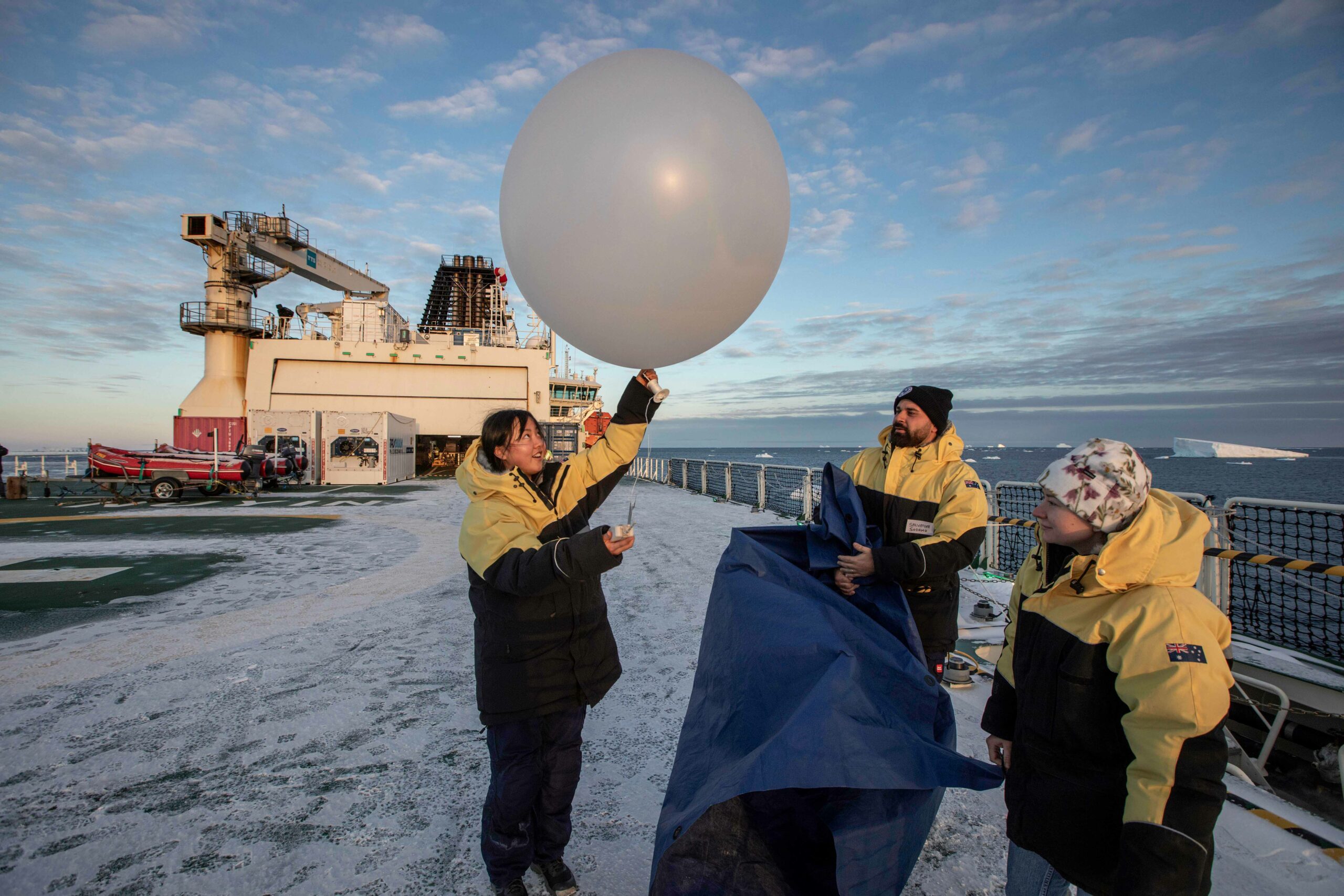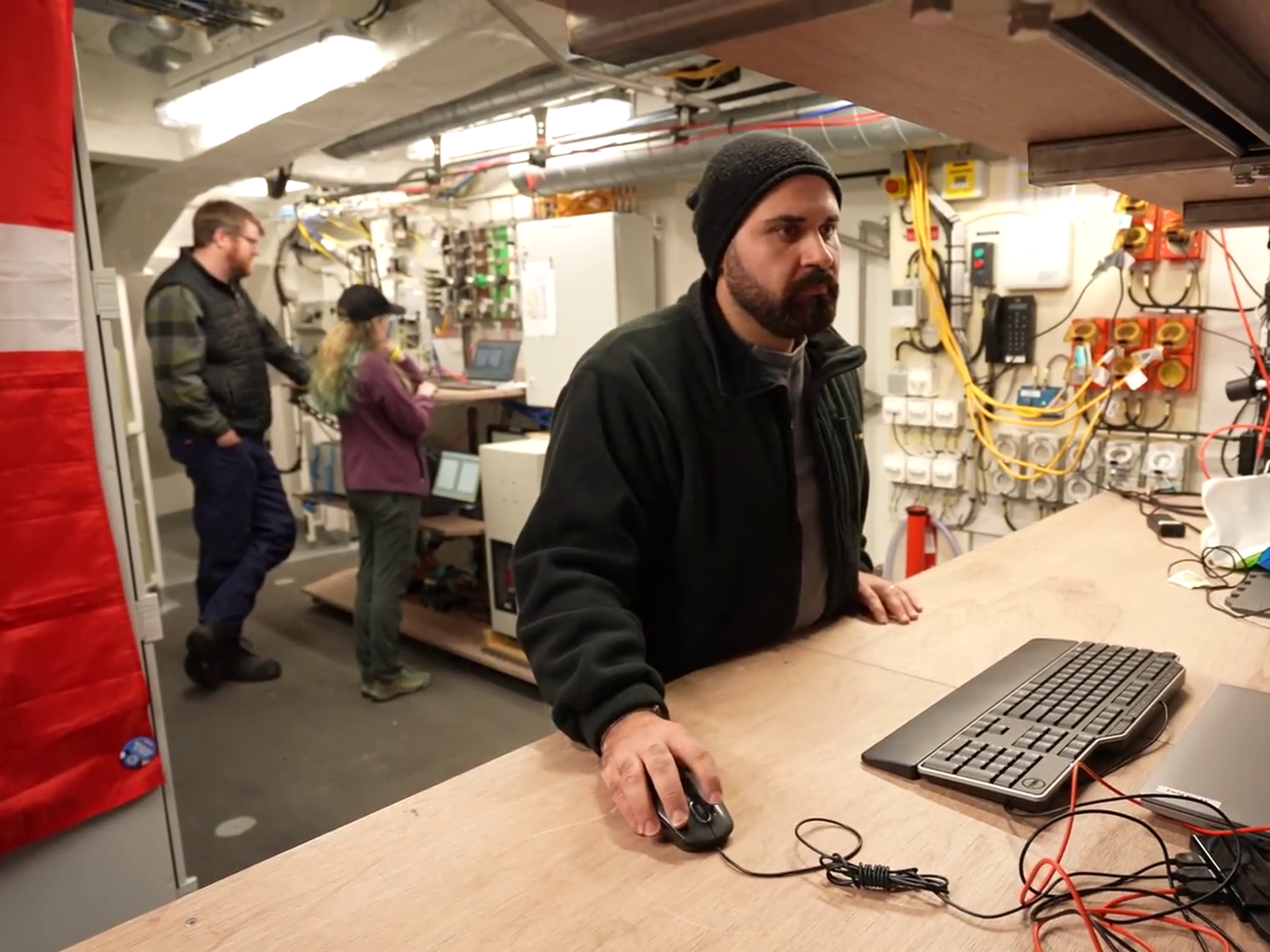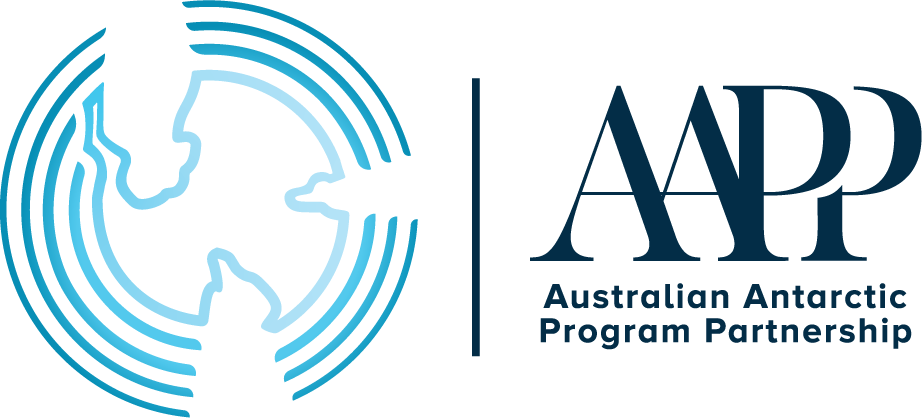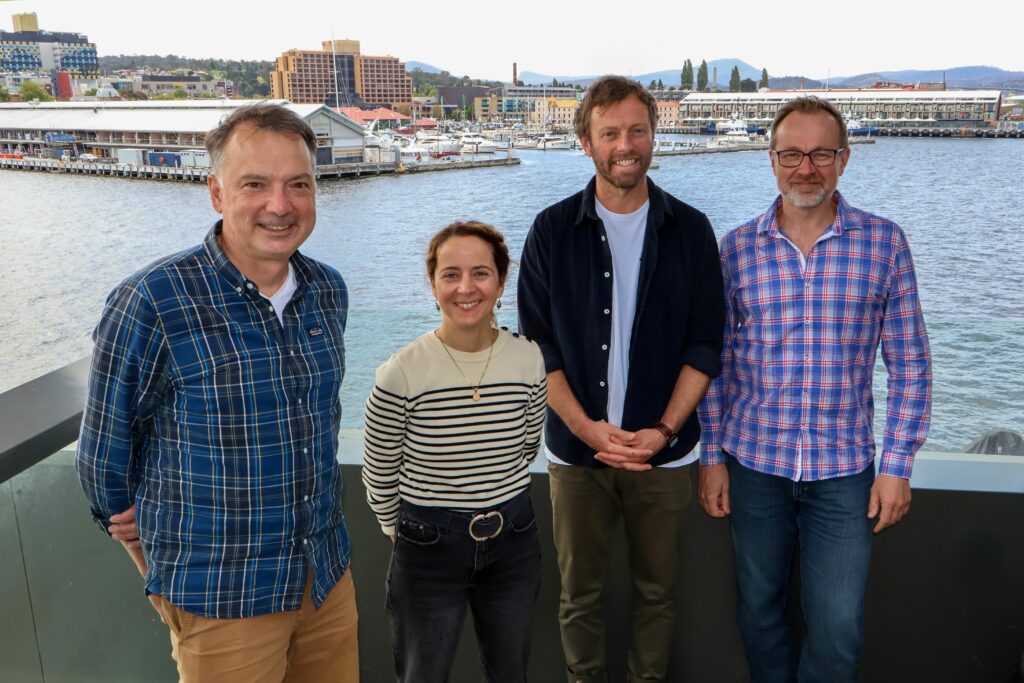Antarctic atmospheric aerosols: tiny particles with global effects
9 July 2025
Congratulations to Salvatore Sodano, who passed his confirmation of candidature at the beginning of May 2025.
Clouds are seeded by small airborne particles called aerosols. Salvatore’s research focuses on how atmospheric aerosols influence clouds over the Southern Ocean and consequently the Earth’s climate system. The microphysical properties of the aerosols (e.g. size and number) in a cloud control how much energy (solar radiation) is reflected back into space and thus impacts how much the planet can heat up.
The first step in understanding the role aerosols play in controlling cloud properties is to understand how they behaved in pre-industrial conditions. Salvatore is doing this by looking at aerosol properties in remote regions, such as the Southern Ocean.
He will integrate aerosol size distribution data collected from RV Investigator (2015-2024), RSV Nuyina, RSV Aurora Australis, and the Kennaook/Cape Grim Monitoring Station into one dataset. This dataset can then be used as input to climate models to improve their predictions of future impacts of climate change. Currently these models have large uncertainties regarding the impact of aerosols, and Salvatore’s research will be critical in reducing these uncertainties to improve the accuracy of the model’s outputs.
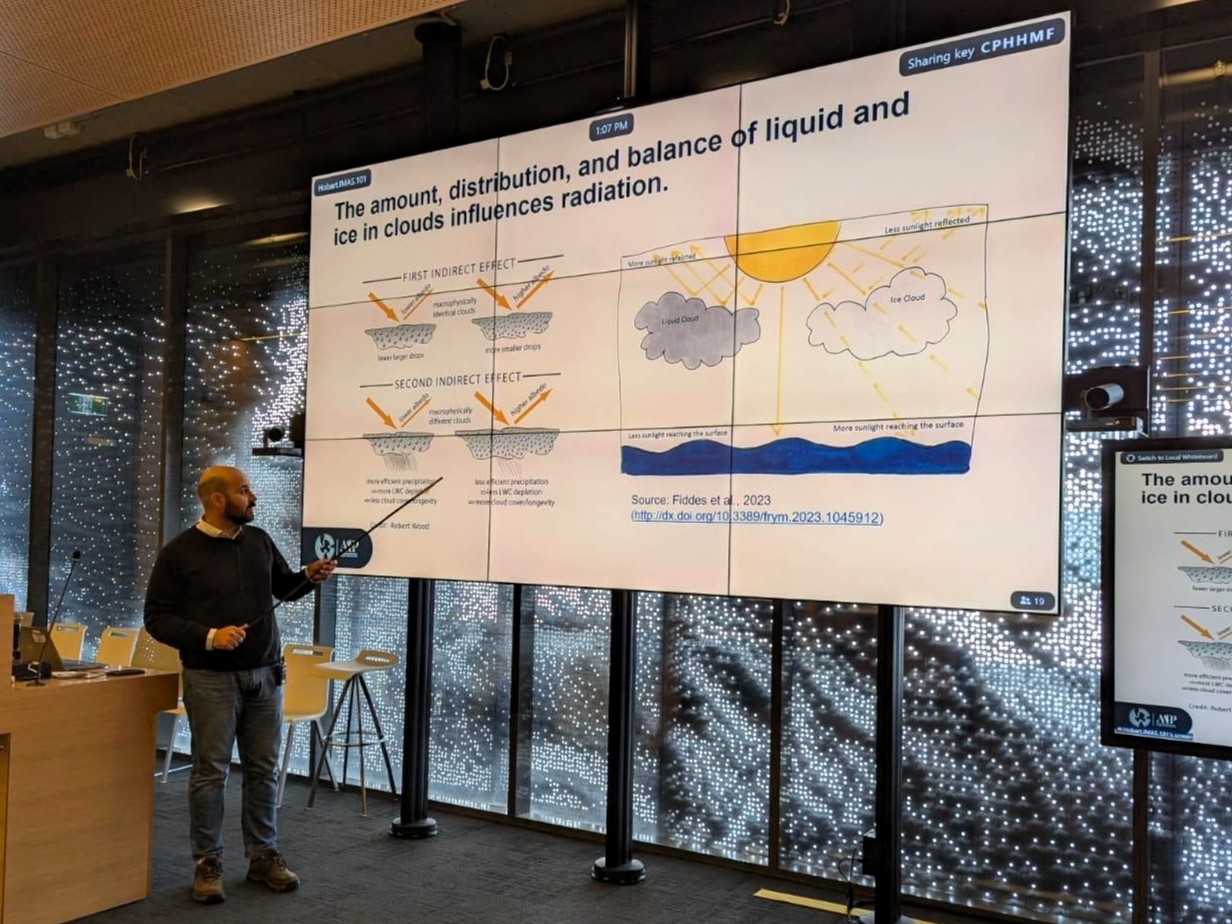
Despite the remoteness of the sampling locations there is still the problem of anthropogenic pollution affecting the sample record. Therefore, to create a baseline Salvatore has to use a number of different instruments to optimise the data (for example, condensation particle counters, scanning mobility particle sizer, and multi-angle absorption photometer) — as well as combine the current knowledge of anthropogenic aerosols with the observations to determine how the anthropogenic aerosols are impacting the dataset and account for this in the data.
Once this dataset has been created, Salvatore will begin to research how aerosol size distribution varies with time, location, and weather patterns, and how these changes impact the formation of particles that influence the creation of clouds. Understanding the physical properties of aerosols in this way will help to provide more knowledge on how they impact precipitation in the Southern Ocean.
As part of his PhD, Salvatore recently returned from Antarctica as a participant in the Denman Marine Voyage where he was able to collect the aerosol data to be used in his PhD. Salvatore had the honour of being part of the first team to use the suite of instruments in the atmosphere lab on RSV Nuyina, which meant performing checks that the equipment was working as expected and to troubleshoot teething issues.
AAPP Marine Carbon Analytical Chemist, Gemma Woodward, spoke to Salvatore about his research:
What has been the highlight of your work so far?
The highlight of my work so far has been contributing to the understanding of the complex interactions between aerosols, clouds, and precipitation over the Southern Ocean. It is incredibly rewarding to know that my research plays a small but meaningful role in helping the scientific community unravel this puzzle. This deeper insight is essential for improving weather forecasting systems and refining climate models, and I am proud to be part of this effort to address one of the great challenges in modern atmospheric physics. Moreover, my participation in the Denman Marine Voyage has made my PhD project truly authentic and unique, allowing me to physically experience how extreme and remote the Southern Ocean really is.
What inspired you to study this area of science?
About a year after earning my master’s degree in environmental engineering in 2019, I was awarded a research fellowship at the National Research Council of Italy (CNR-ISAC). My early work focused on characterising odorous emissions from industrial plants and studying black carbon, a key component of atmospheric particulate matter formed during the incomplete combustion of fossil fuels and biomass.
Over time, I became increasingly fascinated by the smallest aerosol particles, known as “nanoparticles”, minuscule entities often measuring less than 100 nanometres in diameter (roughly 1000 times smaller than the width of a human hair and comparable in size to certain viruses), which possess the remarkable ability to interact with the atmosphere and the clouds in ways that significantly impact Earth’s climate system.
What is your favourite aspect of your research?
I’ve always been curious, constantly searching for new information and asking questions. What fascinates me most is the complexity behind everything, the intricate connections between different elements in science. The way the climate system interacts with the atmosphere is like a giant puzzle, and being part of a community of passionate scientists working to solve it is incredibly rewarding. There’s something special about feeling part of a movement, a group of people driven by the same curiosity and desire to understand. It’s not just a job, it’s a way of life. Of course, there are personal challenges along the way. But what makes research so exciting is that it has no limits. It gives you the freedom to grow professionally while chasing your passion. And I believe that’s what truly binds all researchers — a shared love for discovery and the endless pursuit of answers.
How do you plan to continue your research?
Onboard the Denman Marine Voyage, I was responsible for managing and monitoring a suite of scientific instruments designed to measure various properties of atmospheric aerosols. Some of these instruments count the number of particles in the atmosphere and determine their size, while others provide valuable data on particles capable of forming clouds.
I will continue working hard to achieve concrete and reproducible results to share with the scientific community. My ultimate goal is to contribute, even in a small way, to the infinite puzzle that is our planet.
Salvatore is an AAPP PhD student based at the Institute for Marine and Antarctic Studies at the University of Tasmania and is working under the supervision of Marc Mallet, Sonya Fiddes, Andrew Bowie and Ruhi Humphries.
